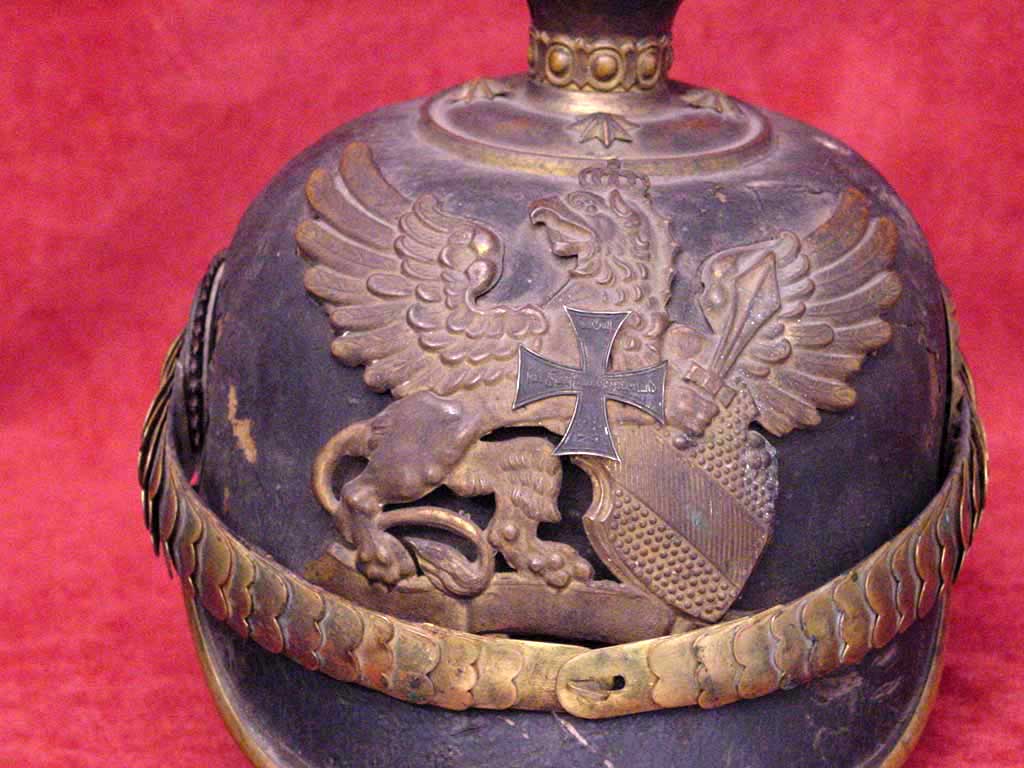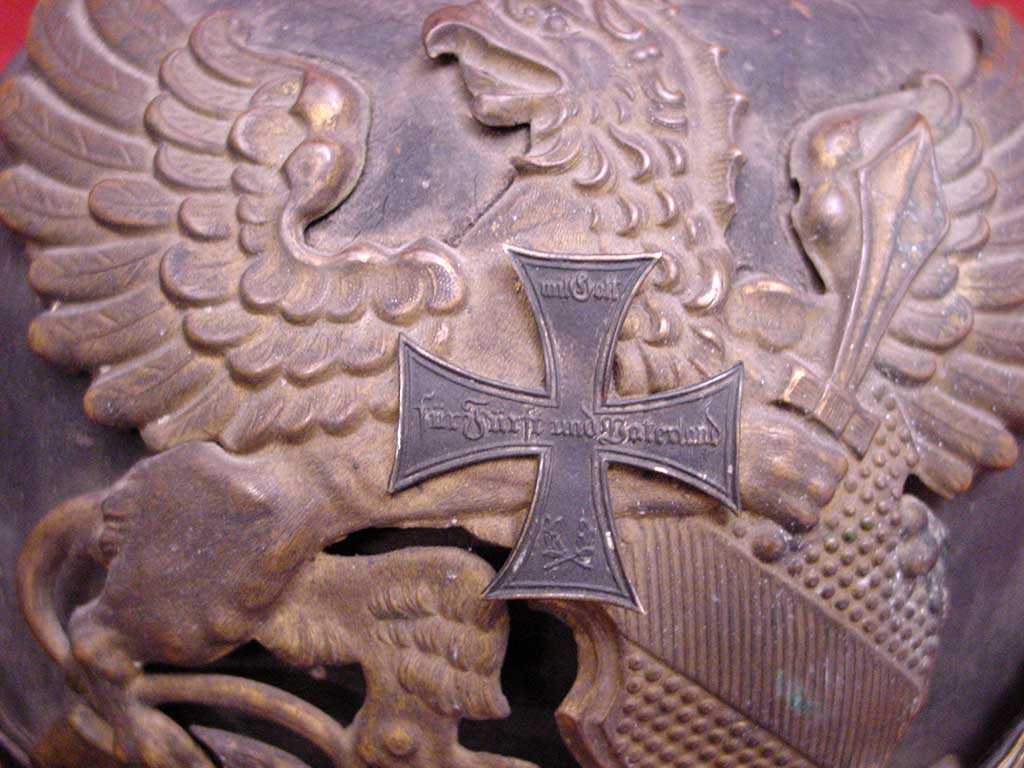
Featured Object: Pickelhaube Helmet
- Post Date: 2/19/2004
- Author: Blake Jennings
- Reading Time: 2 minute read
The pickelhaube is easily one of the most recognizable helmets in all of military history. First designed by King Friedrich Wilhelm of Prussia in 1842 (and similar to a contemporary form used in Russia), the Pickelhaube saw service in over 70 years of German warfare. Pickelhaube helmets were made famous due to the military prowess of the German soldiers who wore them, leading to their adoption around the world. The militaries or police forces of Sweden, Portugal, Chile, Colombia, Venezuela, Ecuador, and Romania have used or are still using the pickelhaube in ceremonial uniforms.
The pickelhaube is easily distinguished from other military headgear by the protruding spire atop the helmet. Originally the spike was intended to fasten the threads of a plumed cavalry helmet, but it was used in the infantry uniform to create an aggressive, militaristic image. Also prominent on the pickelhaube was the helmet plate. The helmet plate was unique to the rank, unit, and region of origin of each individual soldier within the German military. The plate on the front of our helmet reads "Mit Gott für Fürst und Vaterland."
Translation: "with God for Prince and Fatherland.”
While pickelhaubes may have been worn by many different soldiers in many different conflicts, the process for constructing the helmet was relatively universal. There are 3 main leather parts of the helmet: a front and rear visor, sometimes called a lobster tail, are sewn on to a basic shell. The shell was formed by pressing a piece of steamed leather through a large mould. The helmet was then covered in many layers of black lacquer until it could be polished to a bright finish. The helmet had 2 brass reinforcing trim pieces, one at the front visor and the other a brass spire at the rear of the helmet. The front of the helmet was covered with a large gilded brass helmet plate. Each German kingdom, dukedom, earldom, and free city had its own unique helmet plate.
Gift of Dee Robbins
-
- Share:
- Subscribe to Newletter
- Giving

